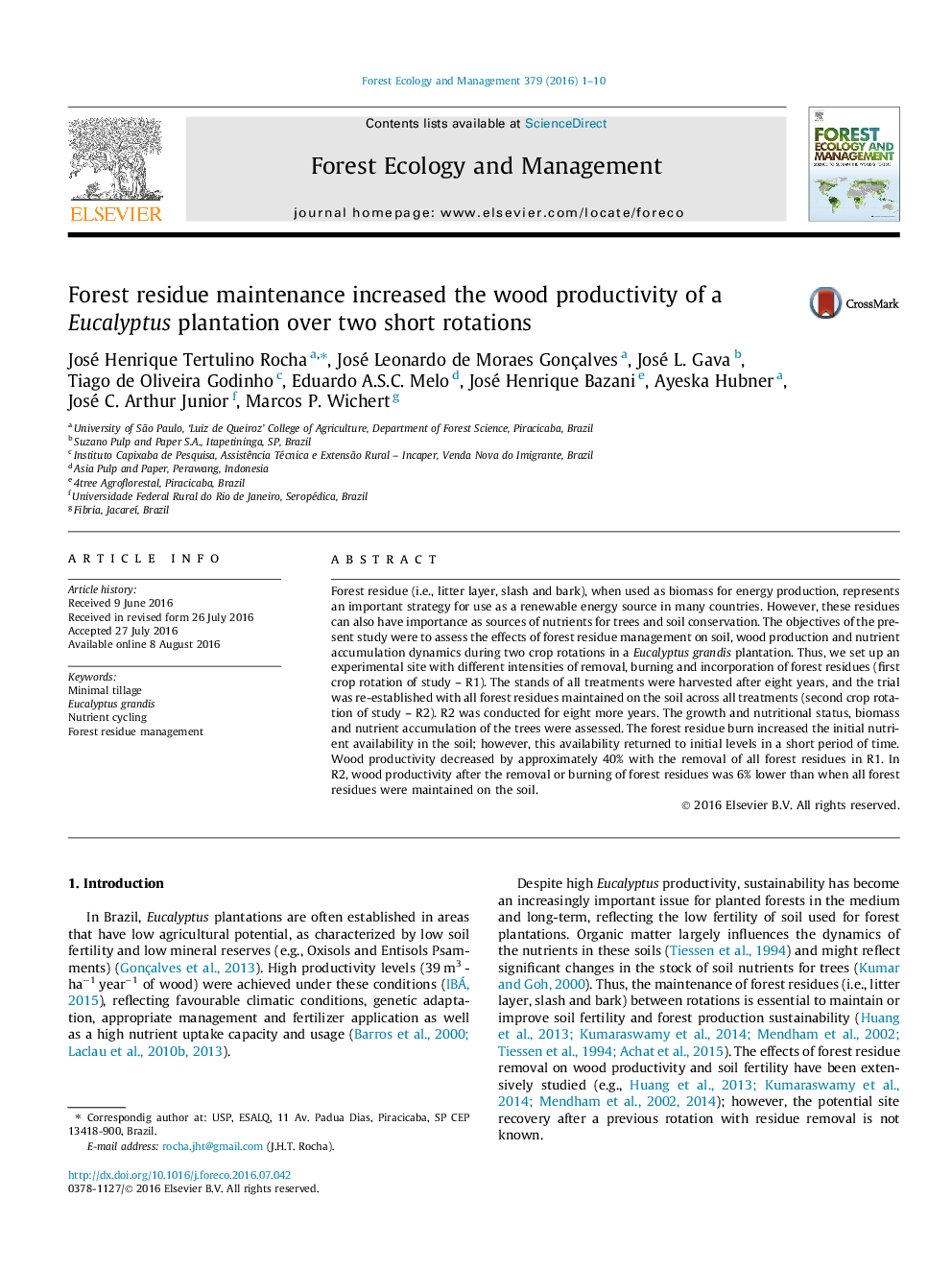| کد مقاله | کد نشریه | سال انتشار | مقاله انگلیسی | نسخه تمام متن |
|---|---|---|---|---|
| 6459612 | 1421379 | 2016 | 10 صفحه PDF | دانلود رایگان |
- Forest residue removal decreases almost 40% of Eucalyptus wood productivity.
- More than 16Â years are required for the site to recover after residue removal.
- Burning forest residues decreased wood productivity in the 2nd rotation.
- Less than 40% of aboveground macronutrients is in the stem wood compartment.
Forest residue (i.e., litter layer, slash and bark), when used as biomass for energy production, represents an important strategy for use as a renewable energy source in many countries. However, these residues can also have importance as sources of nutrients for trees and soil conservation. The objectives of the present study were to assess the effects of forest residue management on soil, wood production and nutrient accumulation dynamics during two crop rotations in a Eucalyptus grandis plantation. Thus, we set up an experimental site with different intensities of removal, burning and incorporation of forest residues (first crop rotation of study - R1). The stands of all treatments were harvested after eight years, and the trial was re-established with all forest residues maintained on the soil across all treatments (second crop rotation of study - R2). R2 was conducted for eight more years. The growth and nutritional status, biomass and nutrient accumulation of the trees were assessed. The forest residue burn increased the initial nutrient availability in the soil; however, this availability returned to initial levels in a short period of time. Wood productivity decreased by approximately 40% with the removal of all forest residues in R1. In R2, wood productivity after the removal or burning of forest residues was 6% lower than when all forest residues were maintained on the soil.
Journal: Forest Ecology and Management - Volume 379, 1 November 2016, Pages 1-10
